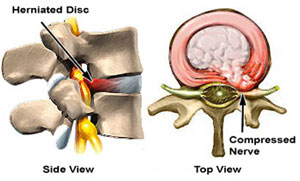We have found in treating thousands of acute back pain and neck pain patients that the only sure path to sustained recovery is correction of the underlying stress which resulted in joint degradation. Pain often comes on quickly, but it follows months or years of improper joint motion and muscle imbalance. The result is a loss of motion in some segments and excessive motion at others.
This is particularly important in patients who are hypermobile, where joint pain including back and neck pain, as well as other symptoms such as headache and sleep disorders, may be caused by ligaments that are lax due to a connective tissue disorder.
These underlying causes are what makes spines vulnerable, and they must be corrected to overcome acute symptoms such as pain in a lasting way. So at RNI we began by treating the acute symptoms with an aggressive diagnosis and relief regimen. But then we treat patients for the long term with physical therapy, to restore muscle balance and prevent reinjury.
Click here to see Optimum Physical Therapy in Kansas City
Recover from Acute Back Pain and Neck Pain Without Surgery

Most of the time our non-surgical methods bring results quickly, saving patients from the pain, expense, slow recovery, and increased risk of re-injury that come with spinal surgery. Surgery can be a valuable tool under the right circumstances, and it is an unfortunate reality that some patients who come to see us will still require surgery. But those patients have the peace of mind that they tried the very best alternative, and the RNI diagnosis they take with them is among the best available in Kansas City.
Neurology is a non-surgical specialty, which is crucial for an objective analysis of whether surgery is needed for back pain and neck pain. If you wish to avoid the risks of surgery, you need a truly independent neurologist to evaluate your case and discuss all treatment alternatives. And if you do require surgery, by all means get more than one opinion, and make sure that before you have surgery, you have seen a neurologist who is not affiliated with the same hospital as your surgeon.
But again, with an evaluation by an independent neurologist, who can recommend an excellent physical therapist, you may not need surgery.
BELOW IS THE PROCESS USED AT THE ROWE NEUROLOGY INSTITUTE
Although Dr. Rowe is no longer seeing patients, by understanding this process, you can be your own advocate and follow these steps, using this information to help you find the appropriate physicians who can help you.
How patients get better without surgery
Our method of treatment, which very often prevents surgery for patients who thought surgery was the only option, relies on three steps of diagnosis. We at RNI did not invent these steps, and any doctor you see about back pain and neck pain could send you out to get some of these tests. However, RNI is perhaps the only clinic in the Kansas City area where such a thorough diagnosis is coordinated and interpreted by a single team, in what we call “integrated care.”
- Talk to the patient and see how they move, including direct examination of the strength of their spine-supporting muscle groups. This includes not just the muscles along the spinal column, but also abdominal muscles and the muscles of the hips.
- Test the affected nerve’s function to determine inflammation and possible damage. This most often includes electromyogram (EMG) and nerve conduction studies. The goal of these studies is to determine whether the function of the nerve itself is compromised.
- Rigorously image the anatomy around the nerve. RNI neurologists are board certified in neuro-imaging, and this skill set is crucial for diagnosing nerve issues around the spine. MRI imaging is the only way to see soft tissues like discs, which are not visible on x-ray. But x-rays are also crucial, as they can capture a “snapshot” of how the patient’s vertebrae align when the patient is in different positions, including flexing and extending their spine. Taken together, MRI and x-ray images allow us to see how the patient’s spine and discs move, and how that movement affects the nerve root.
With a precise diagnosis in hand, treatment can begin.
Treatment goal: Prevent re-injury
We use the absolute latest advances and medications to get you “over the hump,” controlling pain and inflammation to make recovery possible. But what makes RNI truly unique is our tight integration of cutting-edge physical therapy to correct the underlying source of pain for the long haul.
Unlike chiropractors or even other physical therapists, we believe in “teach a person to fish.” Our goal is to keep you pain-free for decades, not just the week until your next appointment. And we have developed the expertise to achieve that.
We teach the patient how to get stronger, and how to maintain their spine so that it doesn’t become vulnerable again. It’s more than just stretches and exercises – we teach how to incorporate strength and flexibility into everyday life. The back is resilient, and given postural support it can often self-correct.
Anatomy of the spine
The spine has served humans very well over the course of our existence. But in the last few decades our lifestyles have changed, and they no longer nurture a supple spine with strong musculature to support it. At RNI, our physical therapy team has taught our neurologists that the key to keeping nerves around the spine healthy is the flexibility and strength of the muscles that position the spine. This includes not just the muscles along the spinal column, but also abdominal muscles and the muscles around the hips.
We make it a priority to see patients from all walks of life, and you would think that our back pain and neck pain patients would be the farmers and laborers among us. But that isn’t the case. Instead it is more sedentary folks like office workers who tend to get acute back pain and neck pain. An injury may be the immediate cause – lifting something heavy, or just standing up wrong – but these injuries happen because of atrophy in the muscles that support the spine.
We have learned in nearly 10 years since first opening our physical therapy department that the root of nearly all back pain and neck pain lies in how the patient moves, or doesn’t move. Our neurology practice has learned some very valuable lessons from our physical therapists. Our conclusion is that only the most intractable cases should get surgery.
Bulging discs, herneation, and radiculopathy
Nearly every adult has some disc abnormalities. The disc is a soft, jelly-like pad between vertebrae that allows flexing in the spine and neck, and maintains space for nerves to run from the spinal cord out to parts of the body. When these discs bulge, they can press nerve roots against bone, causing pain or impairing function of the associated body part. Compressed discs can similarly affect nerves by letting vertebrae get too close together. Acute back or neck pain may seem to come out of nowhere, but usually it is caused by a disc abnormality that has been there for some time.
Why back and neck surgery is risky
There has been a tremendous rise over the last 15 years in back and neck surgeries to treat pinched nerves. It does seem sensible to cut the bulging part off the disc to relieve pressure on the nerve. However, the complex anatomy of the disc defies such a simple solution. The disc is not a single, homogenous material. Rather, it is a jelly-like filling inside a tougher outer capsule, which acts like a levee to hold the filling back.
The surgeon’s knife pierces the outer capsule and removes part of it, exposing the softer inner material to the space where the nerve runs. With the capsule weakened, the same movement patterns which caused the original bulge are almost certain to cause another. The nerve will get pinched again, likely requiring another surgery.
The only way to correct a bulging disc once and for all is to address the way the patient’s spine moves. And that means working on the flexibility and strength of the surrounding muscles. Even when you are already experiencing pain from a bulging or herniated disc, it’s not too late.
Click here to see Dr. Rowe’s entire video series on back and neck pain
Dr. Vernon Rowe has a web-based informational website that provides in-depth information about each of the neurological conditions that we specialize in, including informational videos like this one, with transcripts, that are unlike anything else on the web–they are NOT SPONSORED by any pharmaceutical company or other commercial entity. Go to DOCTORROWE.COM. The information provided will help you navigate your care wherever you go, with knowledge about the questions you should ask your doctor, and the tests that may be recommended, as well as some tips on how to obtain cost effective care, wherever you live.
